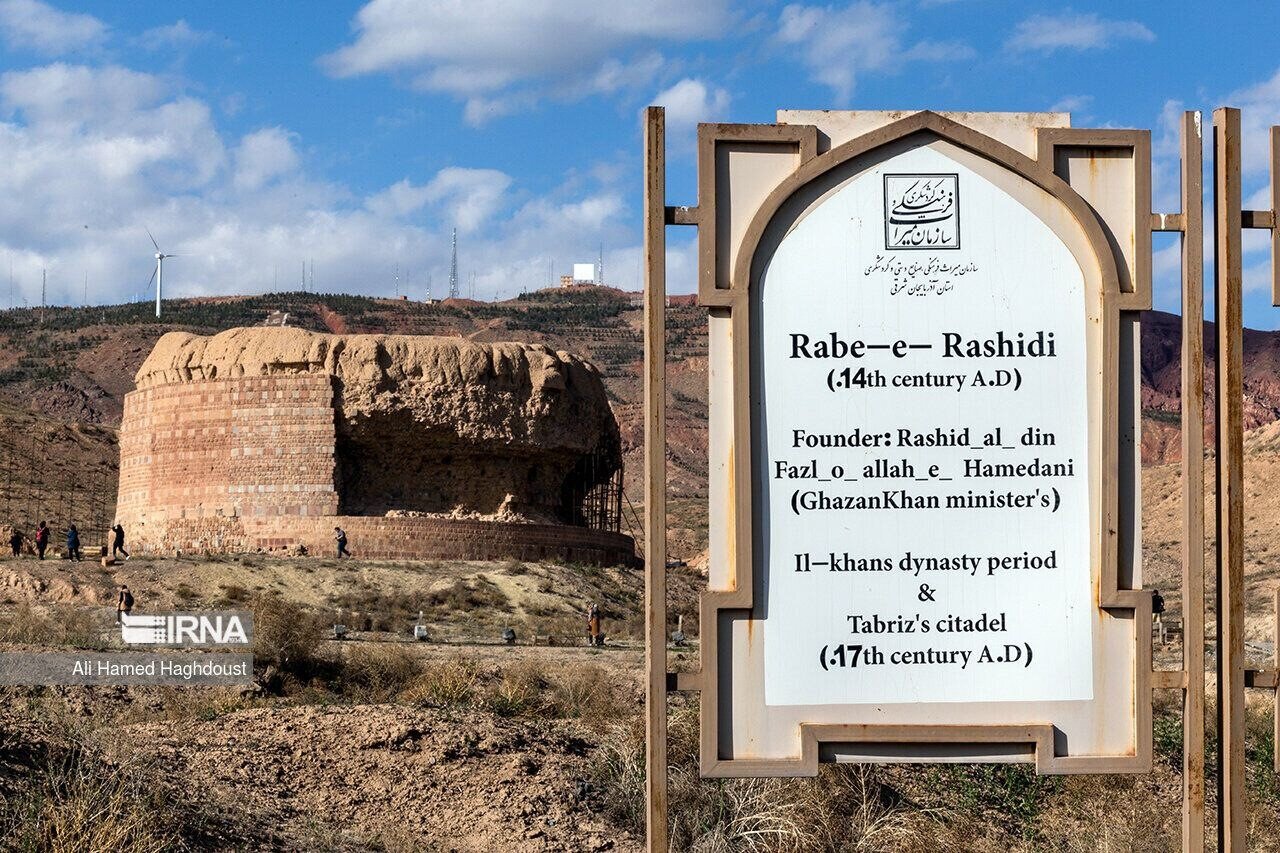Rab'-e Rashidi: restoration campaign, land acquisition drive launched

Speaking during a planning session on Monday, Ahmad Hamzehzadeh, the tourism chief of East Azarbaijan province, said over 24,000 square meters of land -- equivalent to 2.4 hectares -- have been acquired around the ancient site over the past year.
Reviving Rab'-e Rashidi, widely regarded as one of the world’s first international universities, is a top priority, Hamzehzadeh said, outlining the objectives of a five-year management plan. “Our primary focus is on liberating and securing the lands around the site to protect and expand the historical zone.”
Hamzehzadeh also announced the start of a new excavation season at the complex. “Our ultimate aim is to provide public access to the site for tourists, while simultaneously advancing efforts to inscribe Rab'-e Rashidi on UNESCO’s World Heritage list.”
He emphasized the importance of continued scientific research and fieldwork, noting that such efforts over the past two decades have helped preserve the site's historical and academic significance.
The official highlighted a renewed opportunity to complete archaeological surveys and capitalize on the site's untapped tourism potential. “We must accelerate the implementation, organization, and revitalization processes,” he added.
Hamzehzadeh stressed that conservation and restoration currently take precedence over archaeological excavations. “Each stage of excavation demands immediate preservation measures. Without that, the project cannot continue safely or scientifically.”
Improving access for visitors is also a key element in the new phase, Hamzehzadeh noted. “To attract both domestic and international tourists, we need to design suitable access routes and develop supporting infrastructure, including lighting systems and visitor amenities.”
The official underlined that all activities at Rab'-e Rashidi must comply with international guidelines to ensure the site’s eligibility for [a possible] UNESCO recognition. “A specialized team should monitor progress to align our actions with World Heritage criteria from the outset,” he stated.
Rab'-e Rashidi was founded in the early 14th century by the renowned statesman and scholar Rashid-al-Din Hamadani under the reign of Ilkhanid ruler Ghazan Khan. Originally conceived as a university-town.
The historical architectural elements of Rab'-e Rashidi can no longer be clearly identified. What survives are primarily masonry bases from fortifications that were either part of the original 14th-century complex or were added later in the 17th century. The most prominent of these remaining structures features a rectangular projection, which may have served as the foundation for an astrological observatory, an element mentioned in the writings of Rashid al-Din. Additionally, mosaic fragments uncovered at the site may date from Rashid al-Din’s era through to the Safavid period.
The site had already fallen into ruin when Shah Abbas, the renowned Safavid king who reigned from 1587 to 1629, selected it as the location for a fort, which included a governor’s palace. By the late 17th century, these newer structures had also deteriorated, as noted by contemporary travelers.
Today, only a small portion of the once vast complex remains above ground, while much of its structure is likely buried. Archaeologists continue to excavate and study the site in an effort to better understand its original layout and significance.
Rab'-e Rashidi was registered in the national list for cultural heritage in 1975 as one of Iran’s most significant cultural and educational landmarks.
AM
Leave a Comment